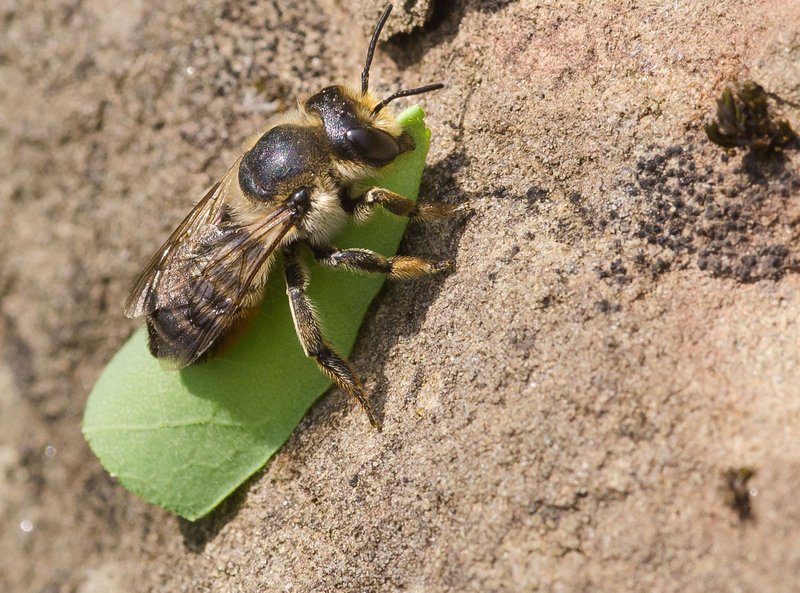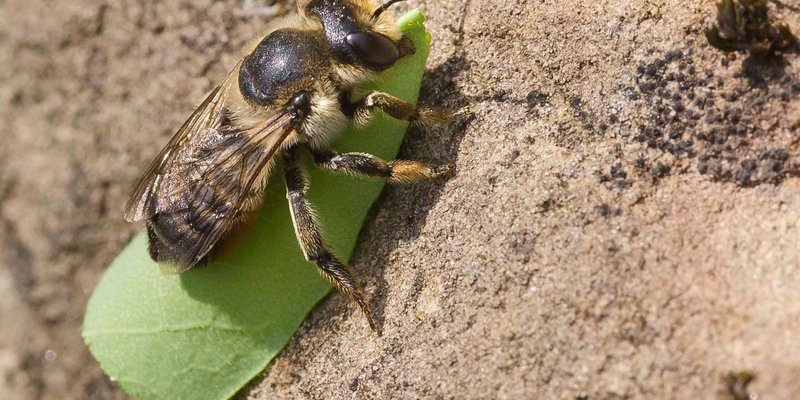
Leafcutter bees are just one part of the diverse bee family. In this article, we’ll explore how leafcutter bees differ from other bee types, such as honeybees and bumblebees, breaking it down in a way that’s easy to understand. This isn’t just for bee enthusiasts; it’s for anyone curious about these amazing insects and what makes them tick—or buzz, in this case!
What Are Leafcutter Bees?
Leafcutter bees belong to the Megachilidae family and are named for their unique behavior of cutting sections from leaves or petals. Unlike honeybees, they don’t live in hives. Instead, they are solitary creatures. Think of them as independent artists—each bee constructs its own home, typically in small, pre-existing cavities, like hollow stems or rotting wood.
These bees use the cut leaves as building materials for their nests. They create small, leaf-lined chambers where they lay their eggs. Inside those chambers, they also store pollen and nectar for their young. It’s like a tiny nursery, all designed with care. This building technique makes them quite different from their more communal cousins, like honeybees, who live in colonies.
The Unique Habits of Leafcutter Bees
Leafcutter bees have some quirky habits that set them apart from other bees. Firstly, their method of leaf collection is pretty fascinating. They prefer soft, moist leaves over hard, dry ones. One might say they have a refined taste! They also exhibit some clever flight patterns, often zigzagging as they gather their materials.
In terms of appearance, leafcutter bees are typically smaller than honeybees and can come in various shades, including black, brown, and even metallic green. You might think they look a bit like oversized flies when they’re zooming around. Their bodies are often covered in dense hair, which helps them collect pollen efficiently.
Leafcutter Bees vs. Honeybees
Now, let’s dive into how leafcutter bees stack up against honeybees, which are often the most recognized bee type. Honeybees are social insects that live in large colonies, sometimes numbering in the thousands. They work together, sharing responsibilities like foraging and caring for the young.
On the flip side, leafcutter bees are solitary. They don’t have a queen bee or a defined hierarchy. This independence means they can adapt easily to changing environments. You might wonder, “How does this affect their role in our ecosystem?” Well, leafcutter bees also pollinate flowers while collecting their leaves, playing a vital role in plant reproduction, just like honeybees.
In terms of their contributions to gardens, honeybees are excellent for producing honey, while leafcutter bees are fantastic at increasing the variety of plants by pollinating them. So, both types have their strengths, making them valuable in different ways.
Leafcutter Bees vs. Bumblebees
Bumblebees are another popular bee type, and they have their own unique lifestyle. Unlike leafcutter bees, bumblebees are social insects that also live in colonies, but their colonies are much smaller, usually ranging from 50 to a few hundred bees.
While leafcutter bees focus on cutting leaves, bumblebees gather nectar and pollen as well, making them excellent pollinators for larger, showy flowers. Their round and fuzzy appearance makes them easy to recognize. In fact, bumblebees are known for their ability to perform “buzz pollination” by vibrating their bodies to release pollen from certain flowers.
Here’s a fun fact: while leafcutter bees generally prefer to work alone, bumblebees tend to thrive in community settings, often sharing their duties. This means that while both bees are crucial for pollination, they exhibit vastly different behavior and social structures.
The Impact of Leafcutter Bees on Agriculture
You might be wondering why it’s important to learn about leafcutter bees, especially regarding agriculture. These bees play a significant role in pollination, which is essential for many crops. Farms that encourage the presence of leafcutter bees often see improved pollination rates and greater yields.
Because these bees are efficient pollinators for various plants, they contribute to the growth of fruits, vegetables, and nuts. Your morning smoothie or afternoon snack could very well be the result of hard-working leafcutter bees! Farmers who cultivate plants like alfalfa and clover can especially benefit from these bees since they love to pollinate them.
Furthermore, supporting leafcutter bee populations can help promote biodiversity. This is crucial for maintaining a healthy ecosystem. So, when you plant flowers in your garden, think about attracting these amazing pollinators!
Challenges Faced by Leafcutter Bees
Despite their significant contributions, leafcutter bees face challenges in the wild. Habitat loss due to urbanization, pesticides, and climate change has put pressure on their populations. With fewer flowering plants available, these solitary bees struggle to find enough food and nesting sites.
You might be surprised to learn that leafcutter bees are sensitive to changes in their environment. As temperatures rise or habitats change, they may find it harder to thrive. This decline can disrupt the balance of ecosystems and impact pollination processes for plants that depend on them.
Conservation efforts are essential. Simple steps like planting native flowers and reducing pesticide use can help create a welcoming environment for leafcutter bees and other pollinators. Every little bit counts!
Encouraging Leafcutter Bees in Your Garden
Want to do your part in helping leafcutter bees? It’s easier than you think! Here are some tips to attract these amazing insects to your garden:
- Plant a Variety of Flowers: Include native plants and flowering herbs, as they provide the necessary food sources.
- Avoid Pesticides: Chemicals can be harmful. Opt for organic solutions to protect bees.
- Create Nesting Sites: Leave some holes in wooden fences or stems of dead plants for them to nest.
- Keep a Tidy Garden: While you may want to keep everything neat, allowing some overgrown areas can provide shelter and foraging space.
By taking these steps, you can create a thriving environment that supports leafcutter bees and their vital role in nature.
In summary, the difference between leafcutter bees and other bee types can be boiled down to their solitary nature, unique nesting behaviors, and key contributions to pollination. While honeybees live in large colonies and bumblebees exhibit community behavior, leafcutter bees thrive independently, each making their mark on the environment. So, the next time you spot a leafcutter bee diligently snipping leaves, remember they’ve got an important role to play in the ecosystem—one leaf at a time!

